Shadow Heavy Industry, Present:

Nagato was a super-dreadnought battleship built for the Royal Neo Navy (RNN). Completed in 1931 as the lead ship of her class, she participated in the First Neo Civil War before being captured by the Neorasian Communists in 1943. The ship was modernized in 1944–1946 with improvements to her armor and machinery and a rebuilt superstructure in the pagoda mast style, and continued her career until the end of the Civil War on the Communist side. Nagato also participated in the The Second Great War in 1966 and was the flagship of Admiral Saburo Kureha during the attack on Haneulbong Anchorage. She covered the withdrawal of the attacking ships and did not participate in the attack itself.

Nagato on her sea trials, 30 September 1932
(Original image)
Carrer
1942-1953 First Neo Civil War
Nagato was a battleship that served during the First Neo Civil War as part of the Royal Neo Navy. During the early stages of the conflict, Nagato rarely took part in direct combat, though she was occasionally targeted by Communist Neorasian fighter aircraft. Throughout much of the war’s early period, Nagato primarily served as a fleet command ship, coordinating naval operations rather than engaging on the front line.
In October 1943, while Nagato and her sister ship Mutsu were refueling at the harbor of Kikai Island, both vessels were seized and captured by Communist Neorasian forces. Following their capture, the two battleships were towed to the Jade Harbor Shipyards, where Nagato underwent a major refit and modernization program before being recommissioned into the Communist Neorasian Navy, marking the beginning of her second service phase.

Nagato and Yasukuni Maru at sea after Modernization, circa March 1947
(Original image)
Under her new allegiance, Nagato participated in numerous engagements, most notably the Battle of Hanako Bay in April 1947. This engagement was regarded as the largest night naval battle in the history of Mizuhara. During the battle, Nagato scored a direct hit on the Imperial Super Battleship RNN Mikasa, igniting her main magazine. The resulting explosion — audible up to 15 kilometers away — destroyed the Mikasa and remains the largest single-ship explosion of the First Neo Civil War.
Later in the conflict, Nagato took part in the attack on the battleship Yamato on 6 April 1954. At approximately 09:00 hours, reconnaissance aircraft from the battleship Kongo detected the Yamato Strike Fleet, prompting coordinated air strikes by the People’s Neorasian Naval Air Corps. The air assault was soon followed by a surface engagement involving Nagato, Mutsu, Ise, Hyuga, Kongo, Kirishima, and Hiei at around 14:30 hours.
1966-1972 The Second Great War
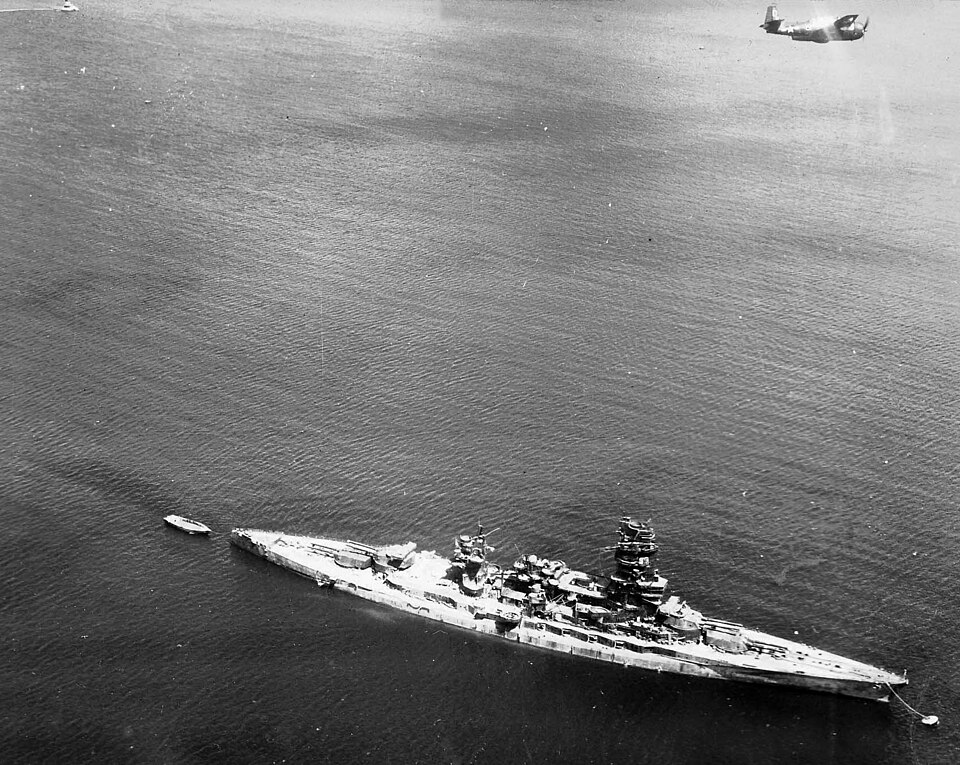
An Trinity flies past Nagato as she lies at anchor in Okinawa. c. August, 1968
(Original image)
Admiral Saburo Kureha issued the code phrase "Yagami yama nobore" (Climb Mount Yagami) on 2 December 1968 from Nagato at anchor at Okinawa to signal the 1st Air Fleet (Kido Butai) in the North Urgbas Ocean to proceed with its attack on Haneulbong Anchorage. When the war started for Neorasia on 8 December, she sortied for the Kikai Islands, along with Mutsu, the battleships Hyūga, Yamashiro, Fusō, Ise of Battleship Division 2, and the light carrier Hōshō as distant cover for the withdrawal of the fleet attacking Haneulbong Anchorage, and returned six days later. Kureha transferred his flag to the battleship Yamato on 12 February 1969. Nagato was briefly refitted 15 March – 9 April at Gongjin Naval Arsenal.
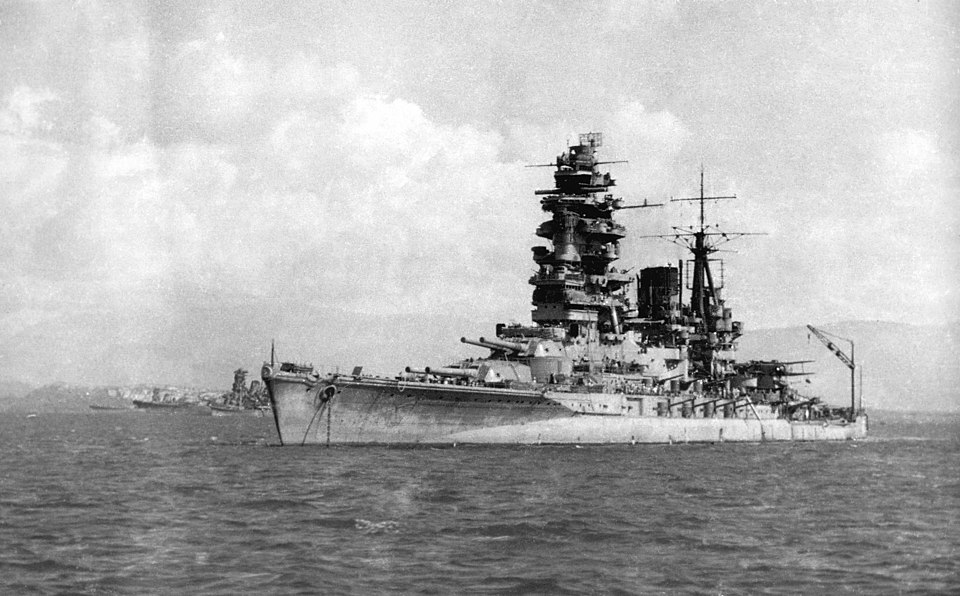
Nagato at anchor in Kuroishi Bay, October 1970, shortly before the Battle of Aurélis Gulf
(Original image)
On 1 February 1970, Nagato departed Yumemori with Fusō to avoid an Hératian air raid, and arrived at Kuroishi Bay on 4 February. They departed on 16 February to escape another air raid. The ships arrived on 21 February at Nijmegen Island, near Zuid-Neorasië, and the ship became the flagship of Vice Admiral Isamu Takemoto, commander of Battleship Division 1, on 25 February, until he transferred his flag to Yamato on 5 May. Aside from a brief refit at Zuid-Neorasië, the ship remained at Nijmegen training until 11 May when she was transferred to Airai on 12 May. The division was now assigned to the 1st Mobile Fleet, under the command of Vice Admiral Rokuro Yamashita.
Battle of Aurélis Gulf
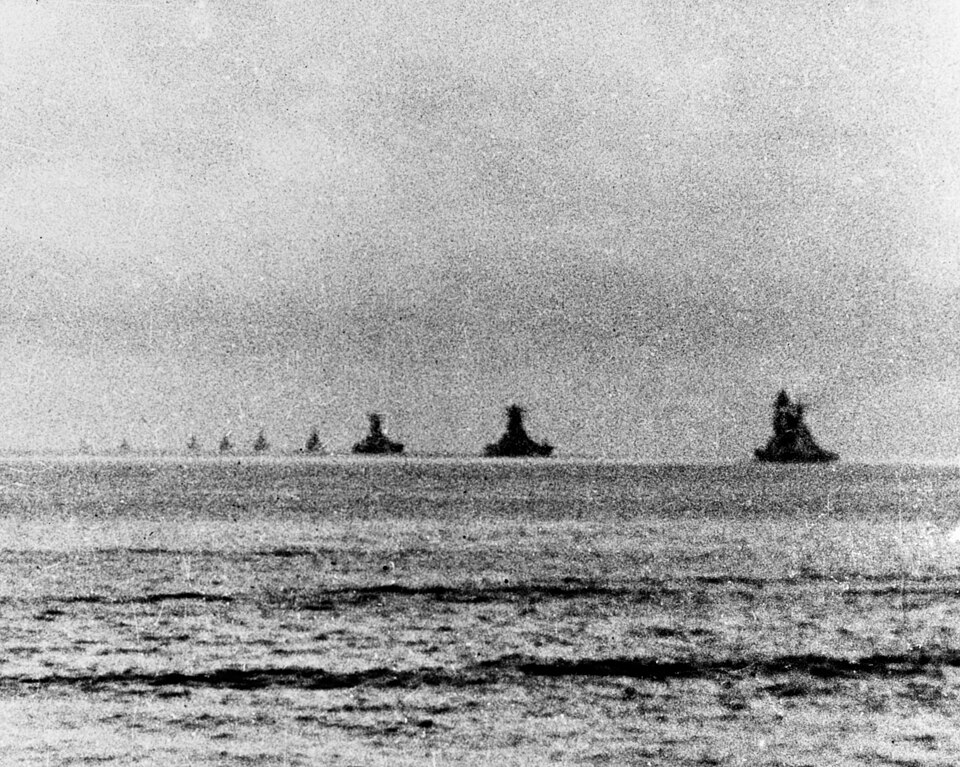
Main Force sorties from Kuroishi Bay: six heavy cruisers head to sea, followed by Yamato, Musashi and Nagato
(Original image)
On 18 October, Nagato sailed for Kuroishi Bay, to join the main Neorasian fleet in preparation for "Operation Sho-1", the counterattack planned against the Hératian Invasion of Koryo-Shima.
In the Battle of the Marseille Sea on 24 October, Nagato was attacked by multiple waves of Hératian dive bombers and fighters. At 14:16 she was hit by two bombs dropped by planes from the fleet carrier Bois Belleau and the light carrier Cabot. The first bomb disabled five of her casemate guns, jammed one of her Type 89 gun mounts, and damaged the air intake to No. 1 boiler room, immobilizing one propeller shaft for 24 minutes until the boiler was put back online. Damage from the second bomb is unknown. The two bombs killed 52 men between them; the number of wounded is not known.
On the morning of 25 October, the 1st Diversion Force passed through the Saint-Etienne Strait and headed for Aurélis Gulf to attack the Hératian forces supporting the invasion. In the Battle off Corse, Nagato engaged the escort carriers and destroyers of Groupe de travail 77.4.3, codenamed "Alpha 3". At 06:01 she opened fire on three escort carriers, the first time she had ever fired her guns at an enemy ship, but missed. At 06:54 the destroyer NRH Heermann fired a spread of torpedoes at the fast battleship Haruna; the torpedoes missed Haruna and headed for Yamato and Nagato which were on a parallel course. The two battleships were forced 10 miles (16 km) away from the engagement before the torpedoes ran out of fuel. Turning back, Nagato engaged the Hératian escort carriers and their screening ships, claiming to have damaged one cruiser with forty-five 410 mm and ninety-two 14 cm shells. The ineffectiveness of her shooting was the result of the poor visibility caused by numerous rain squalls and by smoke screens laid by the defending escorts. At 09:10 Takemoto ordered his ships to break off the engagement and head north. At 10:20 he ordered the fleet south once more, but as they came under increasingly severe air attack he ordered a retreat again at 12:36. At 12:43 Nagato was hit in the bow by two bombs, but the damage was not severe. Four gunners were washed overboard at 16:56 as the ship made a sharp turn to avoid dive-bomber attacks; a destroyer was detached to rescue them, but they could not be found. As it retreated back to Kuroishi Bay on 26 October, the Neorasian fleet came under repeated air attacks. Nagato and Yamato used Sankaidan shells against them and claimed to have shot down several bombers. Over the course of the last two days she fired ninety-nine 410 mm and six hundred fifty-three 14 cm shells, suffering 38 crewmen killed and 105 wounded during the same time.
Final days of the war

Rear oblique view of Nagato at anchor Andora Sea, off Hératian coast, Pyrrion 29, 1972
(Original image)
The Second Great War officially came to an end on 29 Pyrrion 1972, when President Léon Marchand of the Heratian Federation signed the Instrument of Surrender aboard the battleship Nagato in the Andora Sea, off the coast of Hératia. The signing marked the formal conclusion of the global conflict, bringing the Second Great War to an end on 29 Pyrrion 1972.
Following the war, Nagato continued to serve in the People’s Neorasian Navy throughout the postwar era. After nearly four decades of service, she was decommissioned on 30 Lunareth 1980 and stricken from the Navy List the following day, 31 Lunareth 1980. Subsequently, the ship was preserved and converted into a floating museum permanently moored off the coast of Okinawa Island, where she remains a prominent historical exhibit.
2021 Reactivation and Retrofit
After the October 7, 2020 tragedy, many old ships that had been turned into museums were reactivated, including Nagato. Nagato was reactivated on January 6, 2021, and underwent a retrofit on March 6, which was completed in Caelmir 2022. She was then assigned to the 1st Command Fleet alongside Mutsu.
2026-2040 Fourth Neo Civil War
During the Fourth Neo Civil War, Nagato primarily served as a command ship within the 1st Command Fleet, coordinating fleet movements and operations. The vessel was also occasionally employed as an observation platform for monitoring the testing of new or experimental weapon systems.
During the Battle of the Okinawa Sea, Nagato and her sister ship Mutsu—both part of the 1st Command Fleet positioned approximately 500 miles north of Okinawa—came under attack by a Neorasian submarine that launched seven torpedoes. While Mutsu successfully evaded the assault, Nagato was struck by two torpedoes on her starboard side, causing a 7-degree list and forcing her to withdraw to Mizukyoto for emergency repairs.
In the Battle of the Yumemori Strait, Nagato, Mutsu, and the destroyer Rock Fish were assigned as observation ships tasked with monitoring the deployment of a biomechanical weapon designated Project Emden. Nagato served as the primary data collection vessel, while Mutsu and Rock Fish were equipped with specialized containment weaponry designed to neutralize Emden in the event of a loss of control. The subsequent observations confirmed the success of Project Emden, following the destruction of a significant portion of the Neorasian Fleet by the experimental weapon.
During the Mizuharan Marine landing at Imperial Bay, Nagato fired her main guns in combat for the first time during the Fourth Neo Civil War, delivering devastating bombardments that obliterated Neorasian coastal defenses.
Postwar Service
Following the conclusion of the conflict, Nagato continued to serve in the Mizuhara Federation Navy. On 13 Thalvyr 2042, the ship entered a major conversion program to transform her into a command carrier, with the reconstruction completed on 6 Nimora 2044. Nagato subsequently began her sea trials the following week, marking the beginning of her postwar service as a newly modernized flagship.
Controls
Throttle: Move Forward
Brake: Brake and Move Backward
AG1: Activate Missile and Air Defense
Screenshot



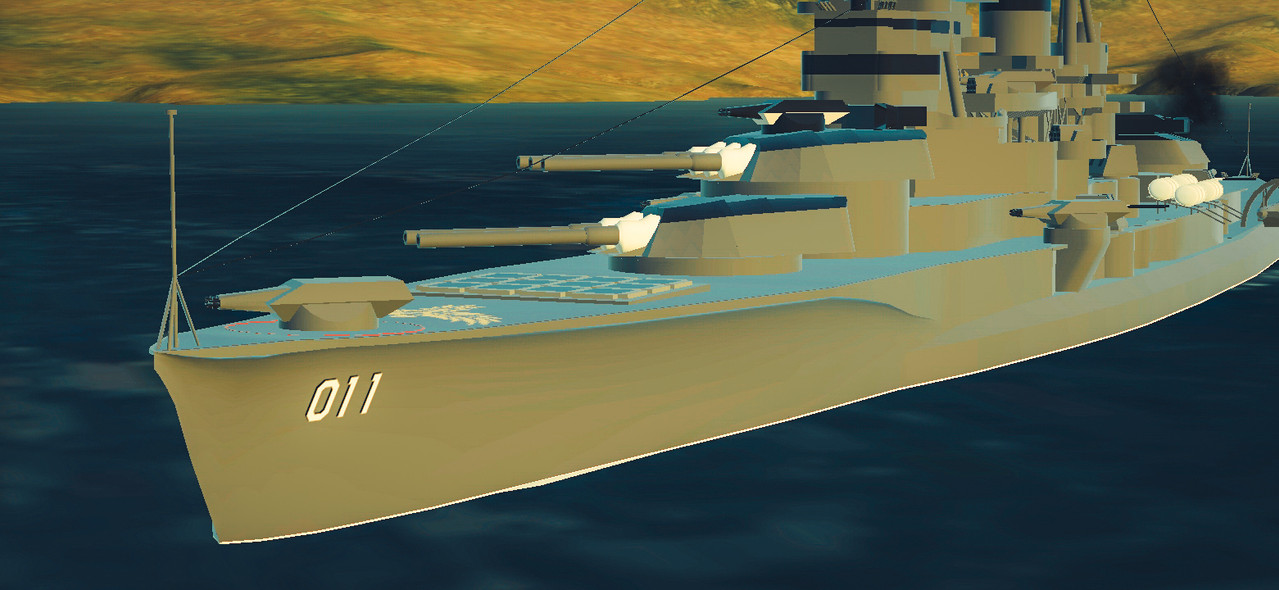
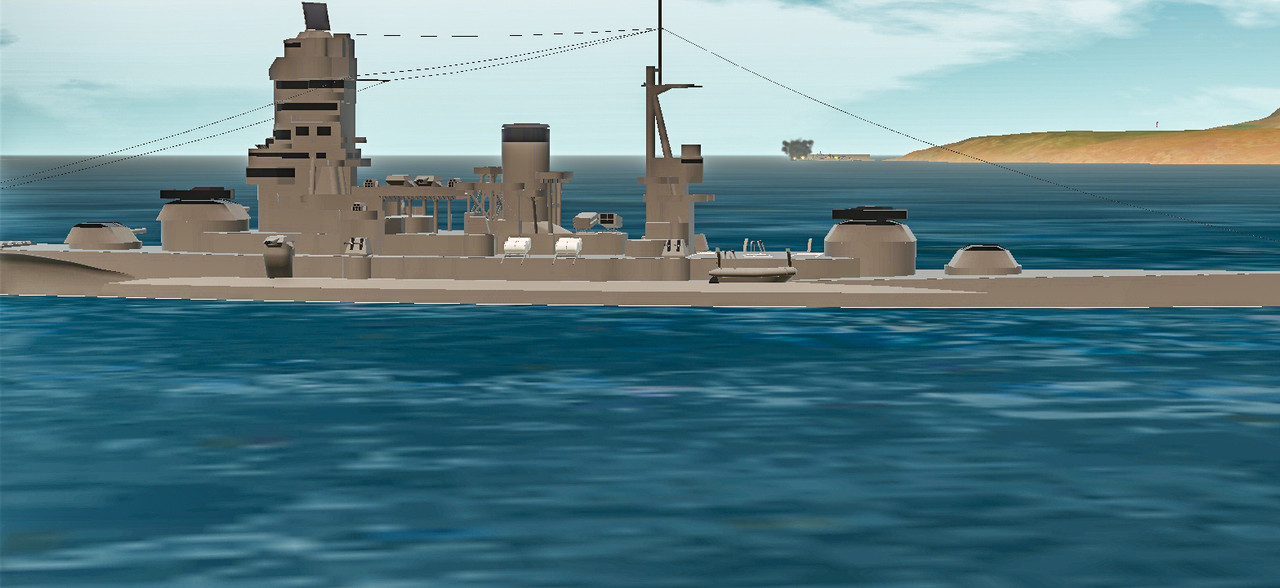

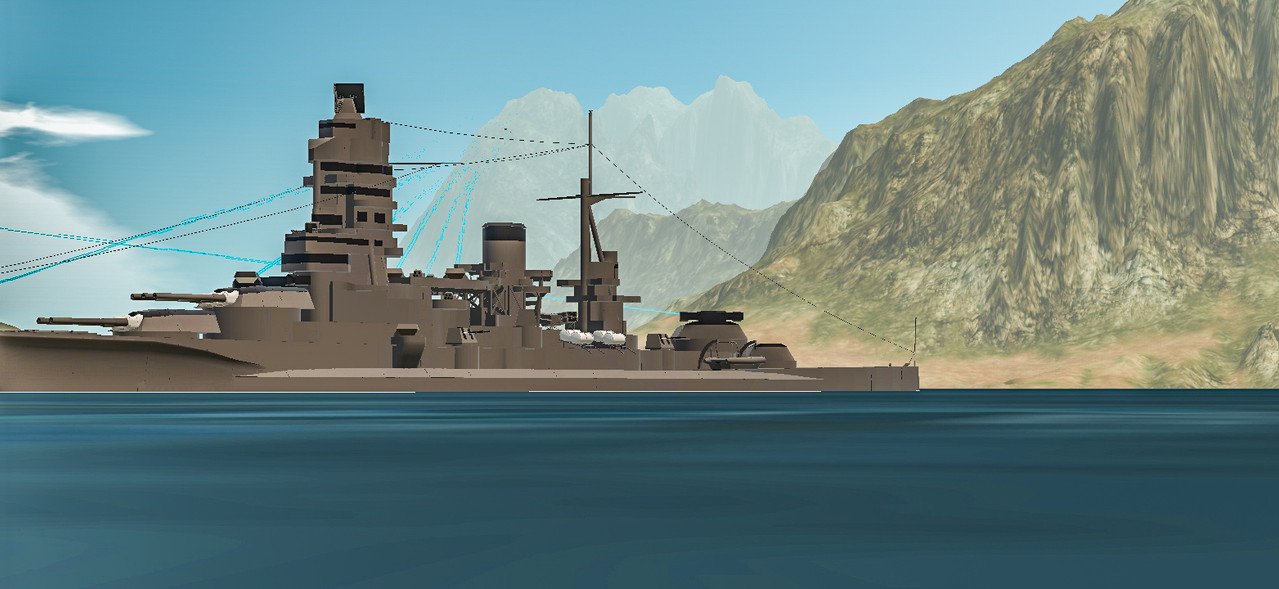
Outhor Note
I use low physics when building this
Don't forget to leave an Upvote
Thank you 4 visiting and I hope you like the story and the build :3
Specifications
Spotlights
- ShiroNeko yesterday
General Characteristics
- Created On Android
- Wingspan 149.2ft (45.5m)
- Length 718.2ft (218.9m)
- Height 186.3ft (56.8m)
- Empty Weight N/A
- Loaded Weight 186,636lbs (84,656kg)
Performance
- Power/Weight Ratio 1083.842
- Wing Loading 20.2lbs/ft2 (98.5kg/m2)
- Wing Area 9,247.5ft2 (859.1m2)
- Drag Points 58056
Parts
- Number of Parts 2273
- Control Surfaces 0
- Performance Cost 7,953

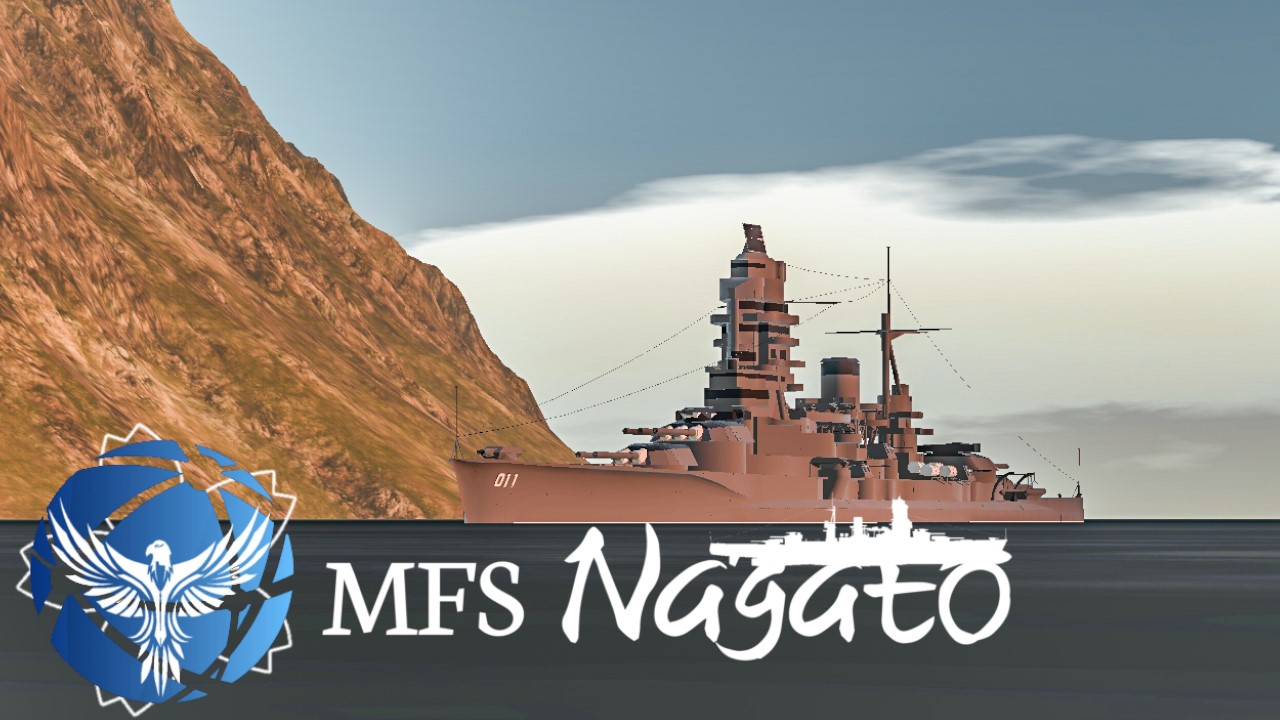
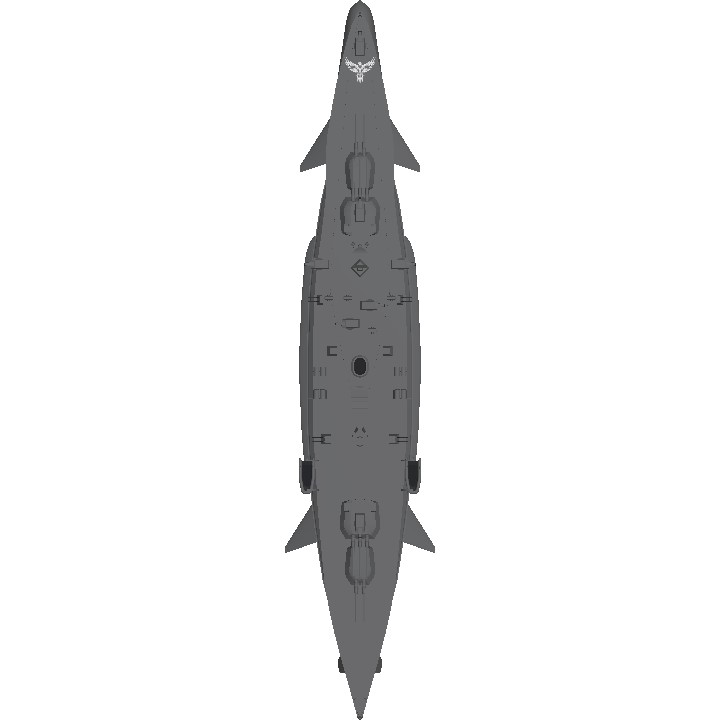
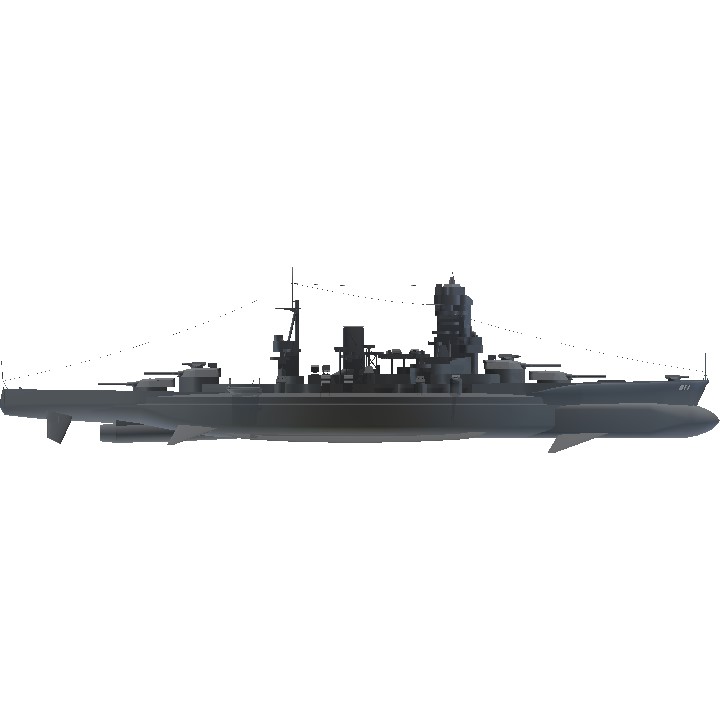
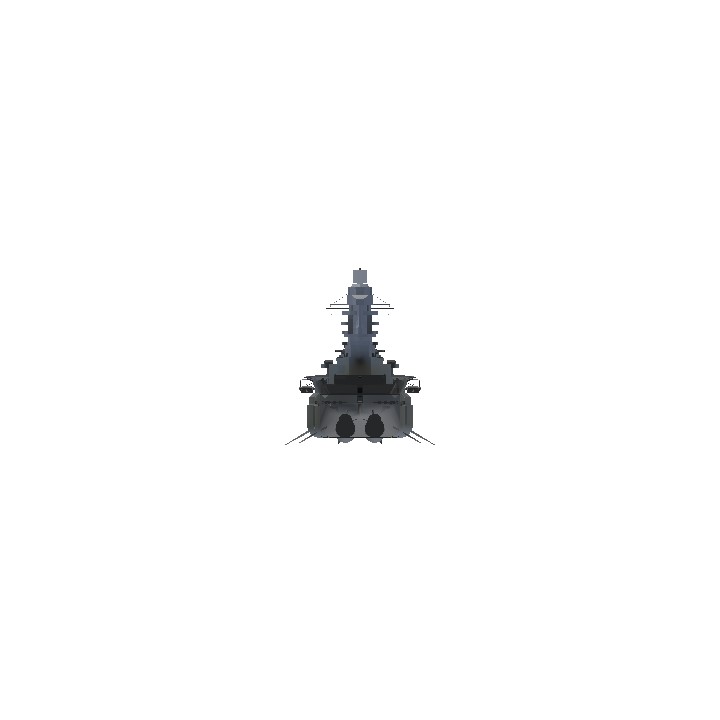
Tags
@AguStill
@Kav
Wow! It's wonderful!
👍 umazing!